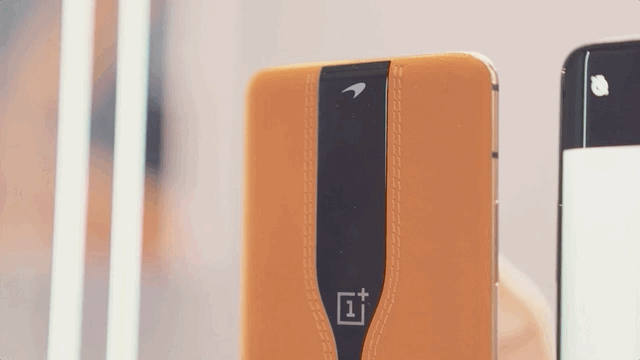OnePlus Concept One hands-on: This McLaren Edition has an invisible camera
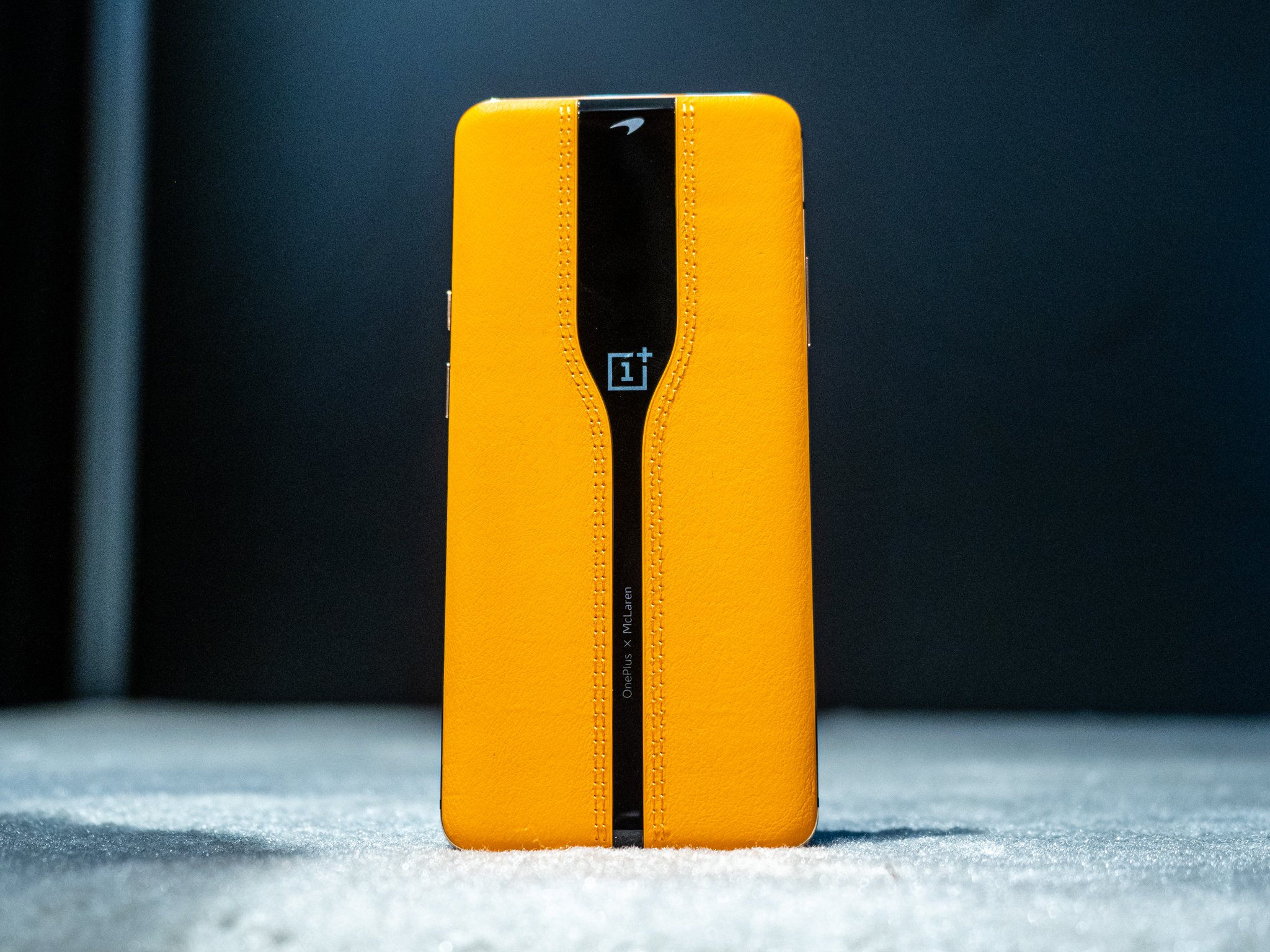
When OnePlus announced it'd be showing off its first "concept" phone, we didn't really know what to expect. But now we've laid our eyes and hands on the OnePlus Concept One, which shows off the bleeding edge of what OnePlus is exploring in terms of smartphone materials and design.
It's good to see OnePlus move beyond just branding and do something functional with this partnership.
The Concept One isn't just a OnePlus project, but instead a continuation of its work with McLaren — and this phone has the strongest influence from the carmaker yet. The back of the phone is adorned in real leather, the exact same material you'll find on the interiors of McLaren's cars, with tidy accent stitching all along. Its unique orange-ish color McLaren calls "papaya" is stunning, but the leather is also supple and feels wonderful. The feeling is particularly unique because it's bifurcated by a sheet of glass down the middle, which when combined with the metal sides provides a mix of textures that's really pleasing.
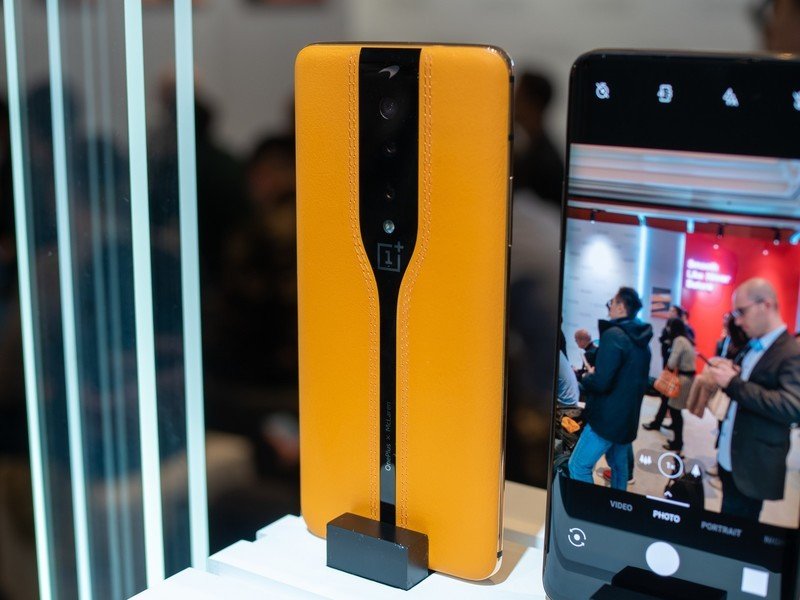
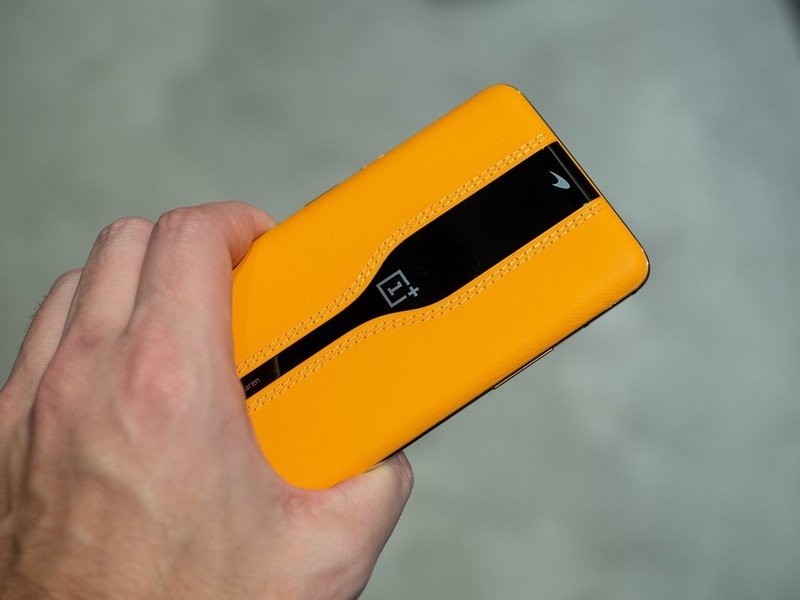
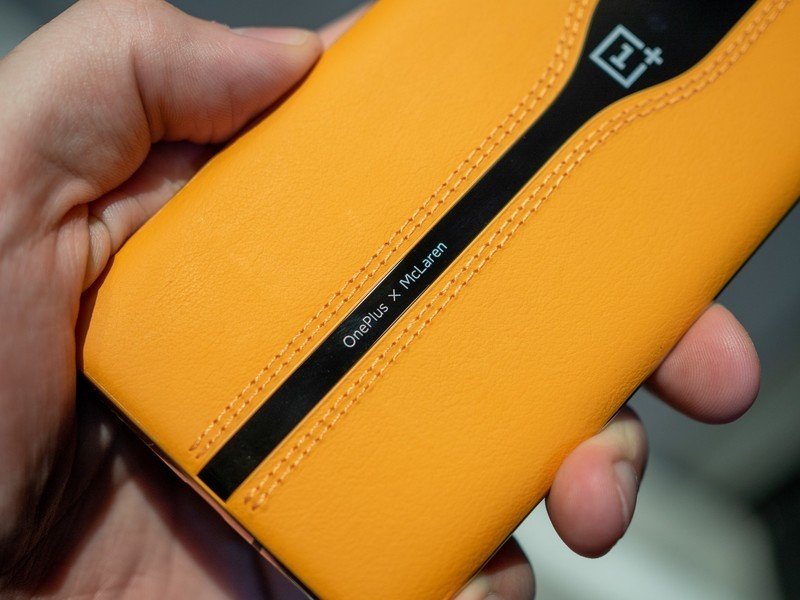
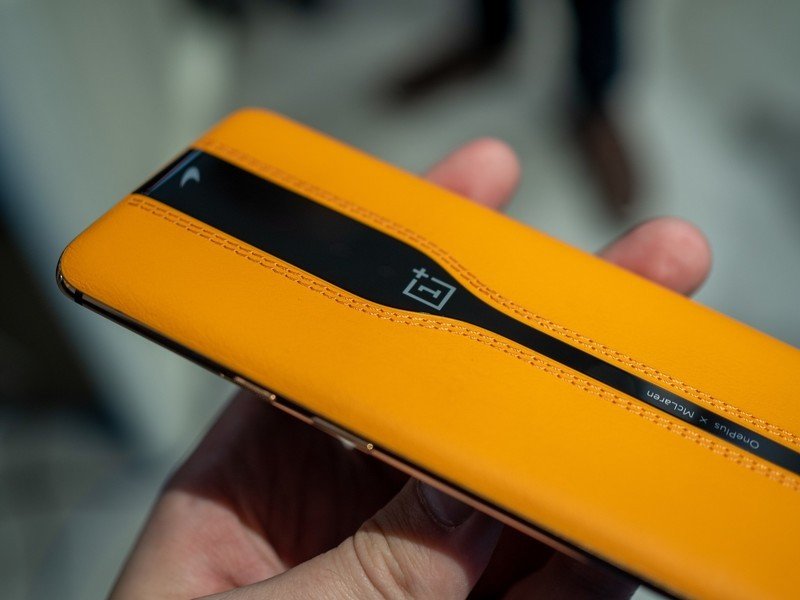
For the first time, the partnership with McLaren isn't purely branding: there's a technological tie-in here. The entire area of glass between the OnePlus and McLaren logos incorporates electrochromic technology that lets the phone rapidly change the opacity of the glass covering the camera array underneath. That means it's effectively just all black, and the cameras are incredibly hard to see, until you open the camera app. It's the same technology McLaren uses in the glass roof of its 720S supercar to shield passengers from the sun, and OnePlus is able to use it on a dramatically smaller scale to control how much light gets into the camera components.
The glass can change from opaque to clear in 0.7-seconds, which is roughly as fast as the camera app can open in the first place. It took a lot of engineering work to get the speed to where it is, while also using a negligible amount of power — and keeping the glass visually clear and consistent for photography. It actually uses two separate 0.15 mm thick panes of glass, with a 0.05 mm thick electrochromic layer in between to make it all work.
It's a clever trick that really does make the phone look sleeker than having the cameras exposed all the time, though honestly it's still really nice looking even when set to be transparent — it's far less imposing than a raised camera module. Thankfully OnePlus is also doing something functional with the tech, letting the glass change to various levels of opacity to act as an ND (neutral density) filter to help your camera properly expose photos in high-brightness situations. Basically, it's like sunglasses for the camera lenses.
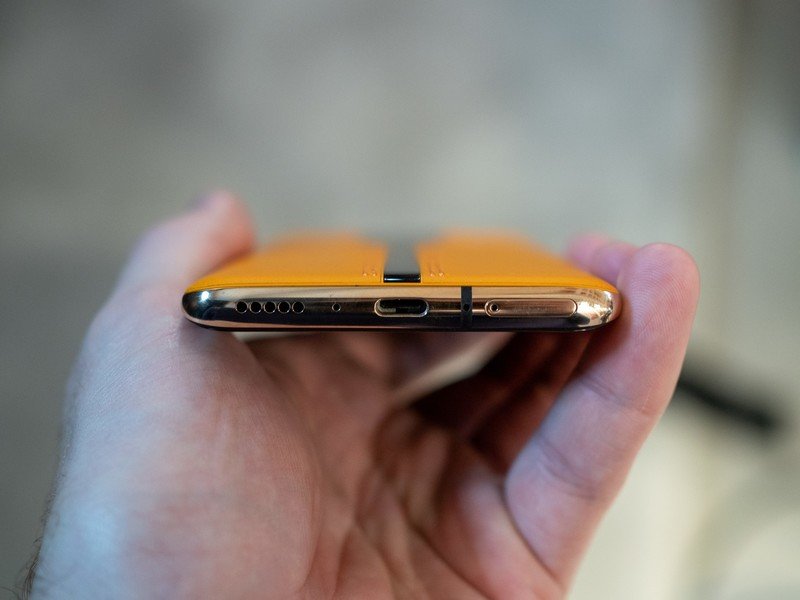
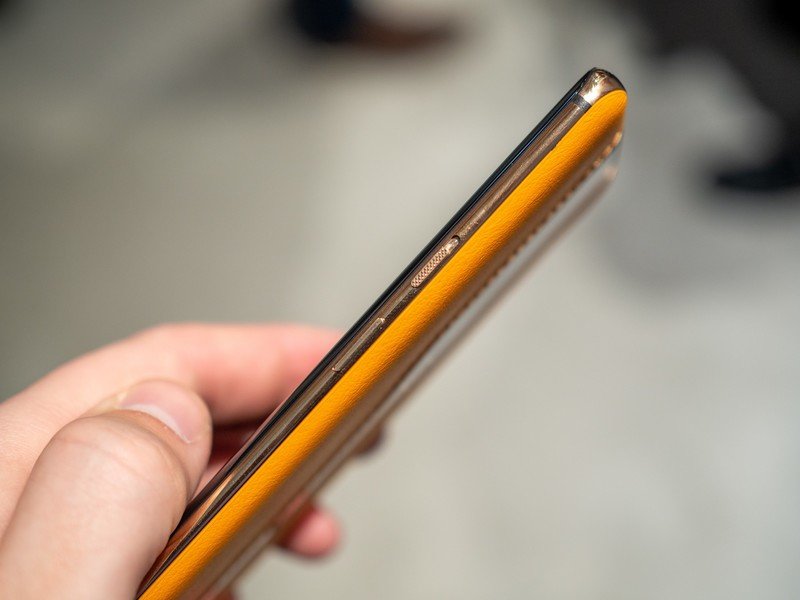
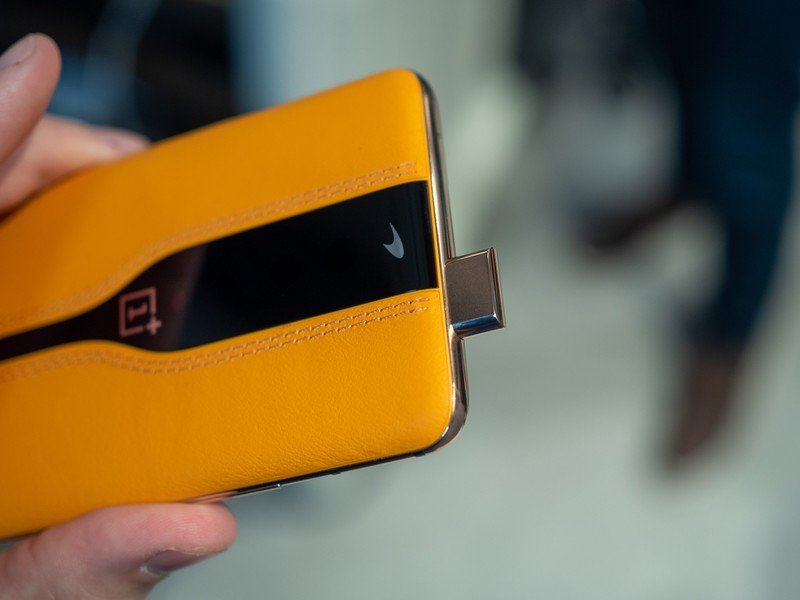
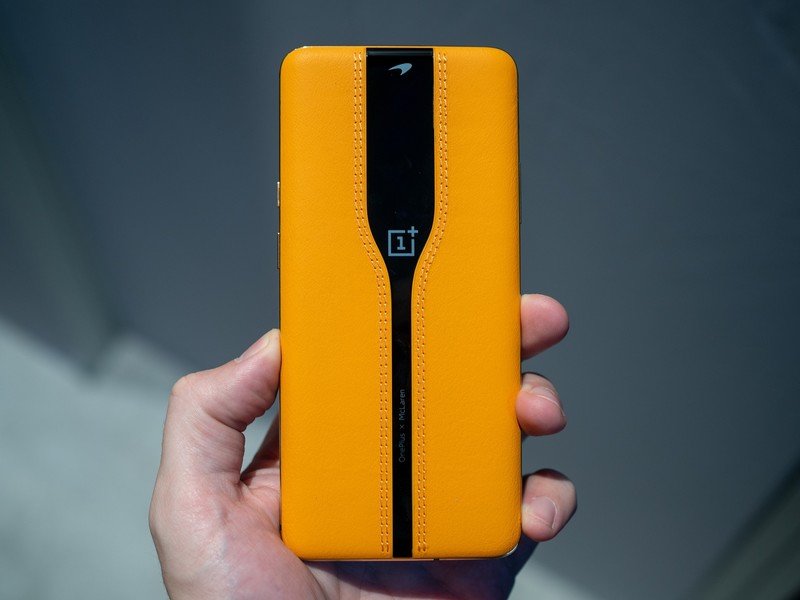
This isn't much of an aspirational concept, but it's hardware we could actually see in a phone soon.
The innovation on the Concept One is purely limited to the back and sides of the hardware design, though. The rest of the phone, from the front hardware, the specs and into the software, is the same as a OnePlus 7T Pro. There are significant technical achievements in hardware, and the firmware that backs it up, that shouldn't be downplayed — but the rest of the experience just feels like a modern OnePlus phone. Which kind of takes the intrigue away from this being a "concept" phone. It all feels like tech that could (or should) be available in the next OnePlus flagship, not shown off as some sort of theoretical tech demo.
But the fact that this concept phone isn't particularly extravagant is actually a good thing from my perspective. Everything here seems very reasonable and achievable, not sky-high and lofty tech that we'll never see in a phone we can buy. Now that really only matters if OnePlus actually eventually uses this tech in a real device, but all indications from using it myself are this is just about ready for prime time.
Get the latest news from Android Central, your trusted companion in the world of Android
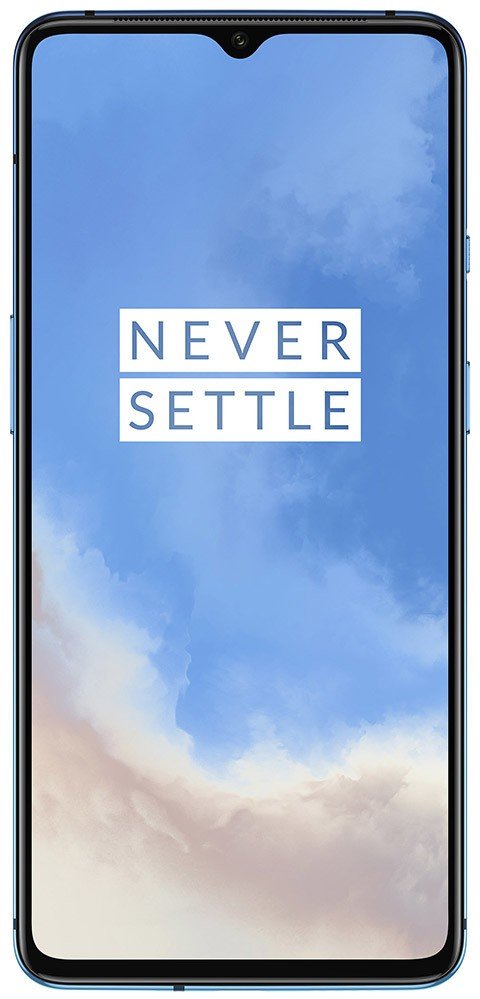
Flagship specs at an outstanding price
The OnePlus 7T may not be as flashy or fancy as the new Concept One, but it does have one big advantage — you can go out and buy it right now. With the 7T, you're getting a 90Hz AMOLED display, Qualcomm Snapdragon 855 Plus processor, and a large 3,800 mAh battery. At this price, it's a steal.

Andrew was an Executive Editor, U.S. at Android Central between 2012 and 2020.
